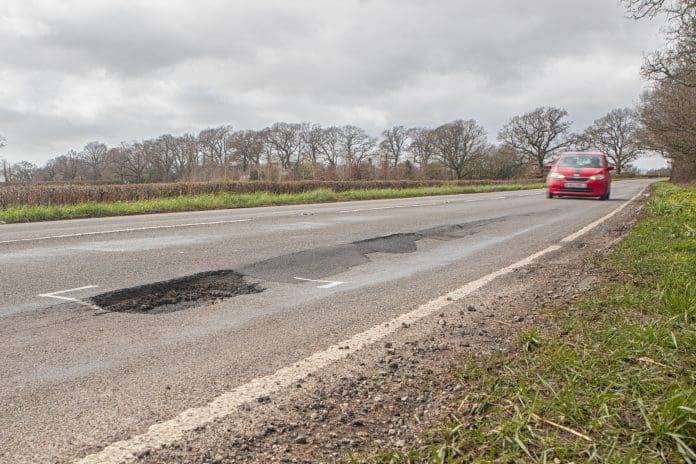The National Audit Office (NAO) has published a report stating that England’s roads and pothole situation is getting worse
The report, titled The condition and maintenance of local roads in England, is intended to determine whether the Department for Transport (DfT) is performing adequately in relation to local roads.
They determine this by seeing whether or not the DfT understands the condition of local roads in England, is using its data to inform its funding decisions, and is supporting and guiding local authorities adequately on asset maintenance.
The state of England’s roads is getting worse
The report finds that the state of England’s local roads are in decline, and the backlog in repairs is getting bigger.
The report also finds that, although local roads make up 98% of England’s road network, only 48% of those roads are in a ‘good’ condition, with 35% and 17% in ‘adequate’ and ‘poor’ conditions, respectively.
This can be further demonstrated by the falling percentage of roads being maintained since 2017, seeing a fall from 7.6% of A roads receiving maintenance in 2017 to just 5.2% in 2023, as well as the damages caused by potholes.
DfT is uninformed
According to the report, the DfT relies on local authorities to report data of roads in need of maintenance. However, it is these local authorities that are not providing all of the required data. In 2023, one fifth of authorities did not share data on the A roads that require maintenance.
The report says: “DfT estimated the backlog to be between £7.6 billion and £11.7 billion in 2019. In 2023-24, estimates by the Asphalt Industry Alliance put the backlog at
£15.6 billion (including in London) and its annual surveys of local authorities
show that the backlog has grown over time” and “The maintenance
backlog is the investment needed to improve the local road network so it is in
a condition of good repair. Improving the network to good repair would better
allow local authorities to take a preventative approach to asset management.”











![[VIDEO] Heathrow’s third runway plan wins out over Arora London, United Kingdom – May 31, 2023: A commercial airliner taking off at London's Heathrow Airport, representing plans for a third runway](https://www.pbctoday.co.uk/news/wp-content/uploads/2025/11/iStock-2143084103-218x150.jpg)


